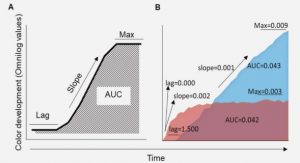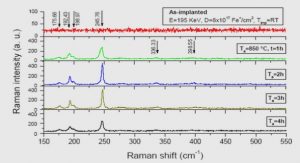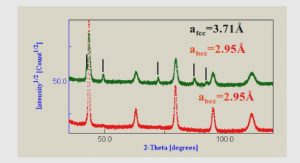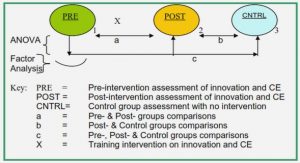Get Complete Project Material File(s) Now! »
Characterization of a smart pH-cleavable PEG polymer towards the development of dual pH-sensitive liposomes
To facilitate the development of PEG-cleavable pH-sensitive liposomes (CL-pPSL), this study aimed to fully characterize a new pH-sensitive polymer, PEGB-Hz-CHEMS. Polyethylene glycol (PEG) functionalised with 4-carboxybenzaldehyde (PEGB) was linked to cholesteryl hemisuccinate (CHEMS) via an acid labile hydrazide–hydrazone hybrid bond (–CO–NH– N=CH–) to form PEGB-Hz-CHEMS. The polymer was post-inserted into DOPE/CHEMS liposomes to form CL-pPSL. A fully validated stability-indicating HPLC-UV method was developed with the aid of multiple linear regression for the mobile phase. The assay was used to evaluate the pH-sensitivity, pathways of cleavage of the polymer and the PEGylation degree of CL-pPSL. The pH-sensitivity of CL-pPSL was compared with conventional PEGylated pH-sensitive (pPSL) using a calcein leakage assay. At 37 ºC, PEGB-Hz-CHEMS was relatively stable at pH 7.4 with a half-life of 24 h. In comparison, at pH 5.5 and pH 6.5 PEG detachment within 1 h was determined as 80%, and 50%, respectively. PEG detachment of the polymer was through simultaneous cleavage of the hydrazide (CO–N) and hydrazone (N=C) bonds, depending on pH, thus the polymer is more pH-sensitive than those with a hydrazine bond only. The grafting densities of PEGB-Hz-CHEMS on CL-pPSL were optimised to achieve a PEG density of 1.7% (mol). The unilamellar CL-pPSL (123 nm) were shown to be stable at least for 3 months at 4ºC and have enhanced pH-sensitivity compared with pPSL in the calcein leakage assay. Therefore, the smart cleavable PEG polymer is promising in liposome formulation to overcome the PEG dilemma.
Key words: Cleavable PEG, Stability-indicating HPLC method, Hydrazide-hydazone, Multiple linear regression model, PEG detachment pathway, Dual pH-sensitive liposomes.
Liposomes have been extensively investigated as versatile carrier systems for drug and gene delivery with a number of FDA approved clinical products. Covalently linking liposomes with hydrophilic polymers, such as polyethylene glycol (PEG), has been demonstrated to stabilize liposomes in vitro and extend their circulation times in vivo [208]. The gold standard for stealth coating is still PEG, typically using PEG-conjugated phospholipids [209]. However, PEG coating hinders the cellular uptake of liposomes by target cells [122], and further prevent their rapid escape from endosomes, thus compromising their efficacy. To overcome this limitation, known as the ‘PEG dilemma’ [5], PEG-cleavable liposomes are designed to be triggered by various tumor-specific stimuli such as low pH [210], enzymes [211], or reduction [2, 197] to detach PEG at tumor microenvironment, while retaining steric stabilisation by PEG in the systemic circulation. The low pH cleavable PEG polymers are typically constructed by linking PEG via a pH-sensitive bond such as hydrazone [48, 141, 160], to the lipid anchor, that is subsequently inserted into the bilayers [212]. At the tumor site, low extracellular pH triggers bond cleavage, and initiates PEG shedding to facilitate endocytosis, followed by membrane fusion and endosomal escape of liposomes [213]. The chemical bond, length and density of PEG chains used for polymer synthesis are important factors for determining the kinetics of PEG detachment which in turn are required for better in vivo performance of the liposomes.
Despite the great efforts in development of tumor targeted PEG-cleavable liposomes [22, 143-145, 159, 192], there is a lack of an accurate and simple method for the quantitative analysis of surface PEG density of liposomes, which is key to estimate their in vivo performance. To date, PEGylation is quantified utilizing direct methods such as colorimetric [214], radiolabelled [215], H1 nuclear magnetic resonance (H1 NMR) spectroscopic [216] or some indirect methods as enzyme-linked immunosorbent (ELISA) [217] and high performance liquid chromatography (HPLC) [218-220] that require 13C-labeling [221]. Compared with HPLC, other methods involve considerable sample treatment, which makes the process time consuming. HPLC is the most convenient technique, yet quantification of these condensation polymers of ethylene oxide and water, using ultraviolet (UV) detection is challenging as PEG polymers do not contain active UV chromophore. Therefore, alternative detectors such as refractive index detectors [218], mass spectrometry [220] and evaporative light scattering detectors [219] are used. Another challenge with HPLC is to achieve adequate resolution between the free PEG and the PEG-conjugate [218, 219]. Thus, a simple and convenient HPLC method to quantify PEG and its conjugate is required to assist the development of smart dual pH-responsive liposomes.
To develop a pH-responsive PEG-cleavable liposomal formulation (CL-pPSL), a PEG-lipid polymer, PEG2000-4-carboxybenzaldehyde-hydrazone-cholesteryl hemisuccinate (PEGB-Hz-CHEMS) has been synthesized in which PEG is conjugated with cholesteryl hemisuccinate (CHEMS) via a hydrazide-hydrazone bond (–CO–NH–N=CH–) [222]. The hydrazide-hydrazone bond was expected to undergo cleavage at acidic pH while remaining relatively stable at physiological pH. In this paper, we report the characterization of the pH-sensitivity of PEGB-Hz-CHEMS, including the degradation kinetics at different pH, the pathways for PEG detachment, and the preliminary work towards formulation of dual pH-sensitive liposomes, CL-pPSL, using the PEG polymer.
To achieve this goal, firstly a simple and reliable stability-indicating HPLC method was developed using ultraviolet visible (UV) detection due to the presence of carboxybenzaldehyde moiety in PEGB-Hz-CHEMS. A multiple linear regression analysis was performed to predict the optimal mobile phase compositions [223] and thus achieve desirable resolution and satisfactory run times for PEGB-Hz-CHEMS and the main degradation products. The HPLC assay was further used in the development of CL-pPSL for the quantification of the insertion efficiencies (IE) of the PEG polymer into liposomes.
Materials
Phospholipids, 1,2-dioleoyl-sn-glycero-3-phosphoethanolamine (DOPE), and 1,2-distearoyl-sn-glycero-3-phosphocholine (DSPC), cholesteryl hemisuccinate (CHEMS), 1,2-distearoyl-sn-glycero-3-phosphoethanolamine-N-[amino(polyethylene glycol)-2000] (DSPE-PEG2000) were purchased from Avanti Polar Lipids (Alabama, USA). Polyethylene glycol methyl ether (mPEG2000), dicyclohexyl carboimide (DCC), 4-(dimethyl amino) pyridine (DMAP), and Sephadex G-25 were obtained from Sigma Chemical Co. (MO, USA). HPLC grade acetonitrile and methanol were obtained from Merck. All other chemicals and solvents were reagent grade. Milli Q water (HPLC grade) was obtained from a Millipak filter unit (Millipore, pore size 0.22 μm).
PEGB-Hz-CHEMS was synthesised as described previously [222], and newly prepared polymer was utilized to develop stability-indicating HPLC method and for further characterization studies.
Stability-indicating HPLC method development for PEGB-Hz-CHEMS
Instrumentation and chromatographic conditions
To characterize the pH-sensitivity of PEGB-Hz-CHEMS and the resulted liposomes, a stability-indicating method was developed and validated on an Agilent 1260 series HPLC system comprising a quaternary pump equipped with an auto-sampler injector and a diode array detector (DAD). Data acquisition was performed using Agilent 1260 software. Separation was carried out on a Luna C18, 5 μm, 4.6 mm × 250 mm column connected with a 4.6 mm × 30 mm pre-column of the same type (Phenomenex®, New Zealand) maintained at 30 °C and flow rate was 1 mL/min. The injection volume was 20 μl. Dual UV wavelengths were set at 300 nm and 254 nm for detection of PEGB-Hz-CHEMS and its degradation products, respectively. Finally, the optimal HPLC mobile phase (water: acetonitrile: methanol, 50:5:45, v/v/v) were applied for the simultaneous determination of PEGB-Hz-CHEMS and main degradation products.
Synthesis of potential degradation products and preparation of standard solutions
To confirm the stability-indicating nature of the assay, first, the potential degradation products, PEG2000-4-carboxybenzaldehyde (PEGB) and PEG2000-4-carboxybenzaldehyde-hydrazone (PEGB-Hz) were synthesised. PEGB was synthesised as described previously [222]. PEGB-Hz was obtained by reacting PEGB with hydrazine-hydrate in 2 mL of chloroform at 25 oC in a tightly closed reaction vessel. This was followed by purification of the obtained PEGB-Hz on Sephadex G-25 using Milli Q water, and its chemical structure was confirmed by NMR spectrometry.
A mixed stock solution containing PEGB and PEGB-Hz-CHEMS both at 1 mg/ml was prepared in acetonitrile and stored at −20 °C. Working standards were freshly prepared by serial dilutions of the stock solution to obtain concentrations of 8 to 125 μg/mL. Quality control (QC) samples were prepared at low (20 μg/ml), medium (40, 80 μg/ml) and high (100 μg/ml) concentrations in the same way as described above from the working standard solutions.
1. Background, Thesis structure, and aims
1.1 Background
1.2 Thesis aims and objectives
1.3 Thesis Structure
2. Literature Review
2.1 Abstract
2.1. Introduction
2.2 Mechanisms of pH-Responsive Targeted Drug Delivery
2.3 pH-Responsive Nanocarriers Based on Protonation / Deprotonation Mechanisms
2.4 Conclusion Remarks and Future Prospects
3. Characterization of a smart pH-cleavable PEG polymer towards the development of dual pH-sensitive liposomes
3.1 Abstract
3.2 Introduction
3.3 Experimental
3.4 Results and Discussion
3.5 Conclusions
3.6 Acknowledgements and disclosure
4. PEG-Benzaldehyde-Hydrazone-Lipid Based PEG-Sheddable pH-Sensitive Liposomes: Abilities for Endosomal Escape and Long Circulation
4.1 Abstract
4.2 Introduction
4.3 Experimental
4.4 Results and Discussion
4.5 Conclusions
4.6 Acknowledgements
5. Dual pH-sensitive liposomes with low pH triggered sheddable-PEG for tumor targeted drug delivery
5.1 Abstract
5.2 Introduction
5.3 Materials and methods
5.4 Results
5.5 Discussion
5.6 Conclusion
5.7 Acknowledgements
6. General discussion and future prospects
6.1 General discussion
6.2 Future directions
7. Appendices
References..
GET THE COMPLETE PROJECT
Development of PEG-sheddable pH-sensitive liposomes for cytoplasmic drug delivery to pancreatic cancer






